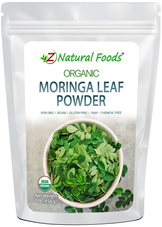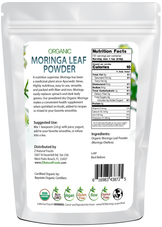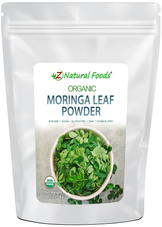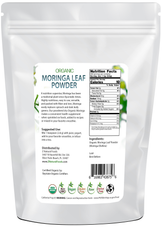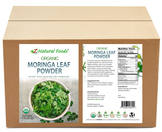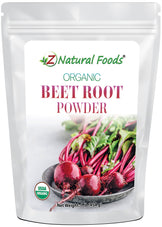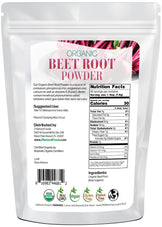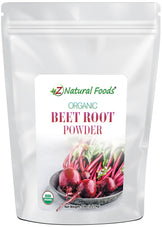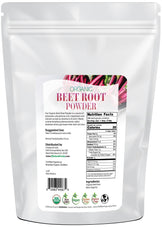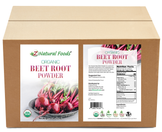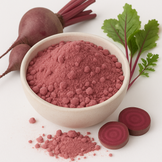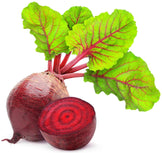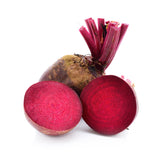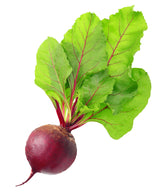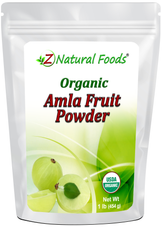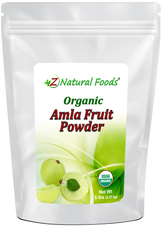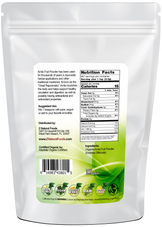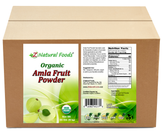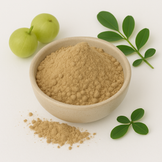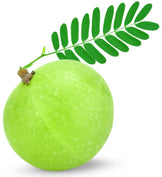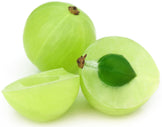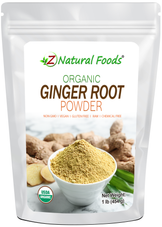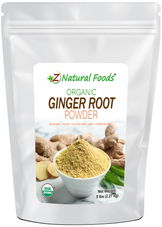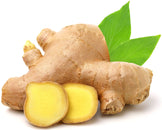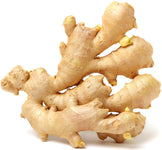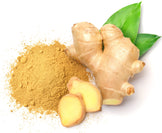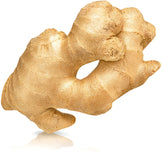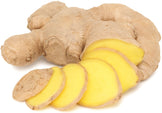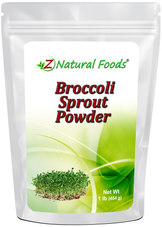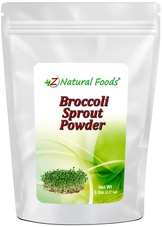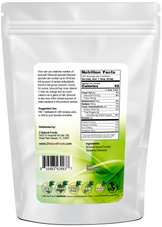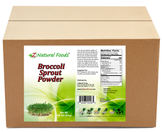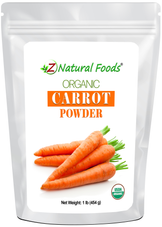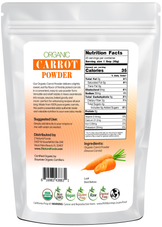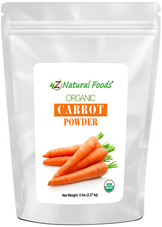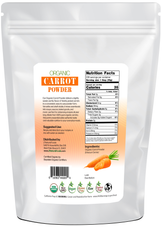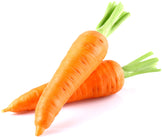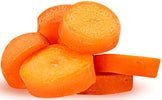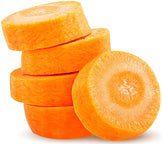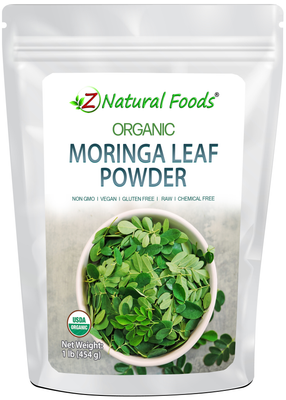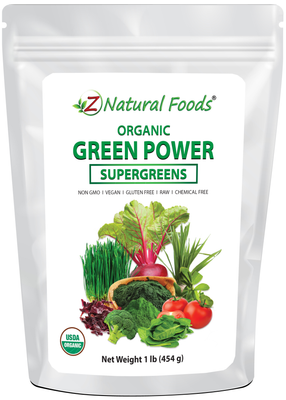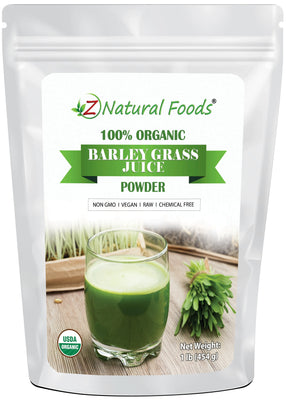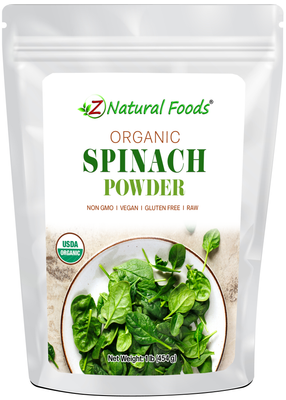About Product
Broccoli Powder is made from carefully dried and ground broccoli, offering a mild, earthy flavor and versatile use in a variety of recipes. From smoothies and soups to sauces and baked goods, it’s an easy way to bring the essence of this classic vegetable into everyday cooking.
Convenient and shelf-stable, broccoli powder blends smoothly into both sweet and savory dishes. It’s a simple ingredient to keep on hand for adding natural vegetable goodness to your favorite meals year-round.
Some research suggests that Broccoli may contain the following constituents:
- Minerals: Magnesium, Phosphorus, Zinc, Copper, Manganese, Selenium
- Vitamins: Vitamin C, Thiamin, Riboflavin, Niacin, Pantothenic Acid, Vitamin B-6, Folate, Choline, Betaine, Vitamin A (RAE), Vitamin A (IU), Beta Carotene, Alpha Carotene, Beta Cryptoxanthin, Lutein & Zeaxanthin, Vitamin E, Beta Tocopherol, Gamma Tocopherol, Vitamin K
- Amino Acids: Tryptophan, Threonine, Isoleucine, Leucine, Lysine, Methionine, Cystine, Phenylalanine, Tyrosine, Valine, Arginine, Histidine, Alanine, Aspartic Acid, Glutamic Acid, Glycine, Proline, Serine
- Flavones: Luteolin
- Flavonols: Kaempferol, Myricetin, Quercetin
This product is 100% natural and minimally processed. Taste, smell, texture, and color vary from batch to batch.
Suggested Use: Mix 1 to 2 tablespoons with recipes, juice, or add to your favorite smoothie.
Mixing Suggestion: To increase flavor and nutritional profile, combine our organic carrot, organic beet, and tomato powder in a smoothie.
Botanical Name: Brassica Oleracea.
Other Names: Calabrese, Brassica Oleracea Italica Group, Brassica oleracea var. italica, Broccoli, Brócoli, Purple Sprouting Broccoli
Ingredients: Organic Broccoli Powder.
Parts Used: Whole Broccoli.
Origin: Grown and dried in China and packaged with care in Florida, USA.
Certifications: Certified USDA Organic.
How to Maintain Optimum Freshness
- This product is packaged in airtight stand-up, resealable foil pouches for optimum freshness.
- Once opened, push the air out of the pouch before resealing it to preserve maximum potency.
- Keep your powder in a cool, dark, dry place.
This product is 100% natural and minimally processed:
Taste, smell, texture, and color vary from batch to batch. Go here to learn why our products may naturally vary.
The important protections we take to bring you safe and nutritious superfoods:
Please go here to discover the essential steps we take to deliver fresh, quality nutrition.
Bulk Quantities?
Need to order a large quantity of our products? We are happy to help! Please get in touch with our Bulk department to discuss the details.
* Product packaging, pictures, and origin may vary.
Sources & References
2. Y Zhang, et al. (1992) A major inducer of anticarcinogenic protective enzymes from broccoli: isolation and elucidation of structure, Proc. Natl Acad. Sci., 89:2399"“2403 .
3. Angier, Natalie (1992-03-15). "Potent Chemical To Fight Cancer Seen in Broccoli - The". New York Times. Retrieved 2009-11-16.
4. P. Talalay, et al. (1997) Broccoli sprouts: An exceptionally rich source of inducers of enzymes that protect against chemical carcinogens, Proc. Natl. Acad. Sci., 94:1036710372.
5. Angier, Natalie (1997-09-16). "Researchers Find a Concentrated Anticancer Substance in Broccoli Sprouts - The". New York Times. Retrieved 2009-11-16.
6. Nutrient Data Laboratory.
7. Rungapamestry et al. British Journal of Nutrition (2007), 97;644"“652.
8. Kensler et al. Cancer Epidemiol Biomarkers Prev 2005;14(11).
9. Cancer Epidemiology, Biomarkers Prevention, 2005; 14(11).
10. Yang, YM; Jhanwar-Uniyal, M; Schwartz, J; Conaway, CC; Halicka, HD; Traganos, F; Chung, FL (2006). "N-acetylcysteine conjugate of phenethyl isothiocyanate enhances apoptosis in growth-stimulated human lung cells". Cancer Research 65 (18): 8538"“8547. doi:10.1158/0008-5472.CAN-05-0236. PMID 16166335.
11. Proc. Natl. Acad. Sci. USA, 2002, 99(11):7610"“7615.
12. Cancer Epidemiology, Biomarkers & Prevention, 2005, 14(11.2): 2754s.
13. Cancer Epidemiology, Biomarkers & Prevention, 2005, 14(11).
14. Cancer Letters, 2006, 240:243"“252.
15. Cancer Research, 2006, 66:8293"“8296.
16. Proc. Natl. Acad. Sci., USA, 2007, 104(44):17500-5.
17. Cancer Research, 2003, 63:3980"“3986.
18. Carcinogenesis, 2004, 25:219"“227.
19. Carcinogenesis, 2007, 28(7):1485"“1490.
20. Cancer Epidemiology, Biomarkers & Prevention, 2001, Vol. 10, pp. 949"“954.
21. Carcinogenesis, 2004, 25:83"“90.
22. BMC Cancer, 2006, 6:62.
23. Proceedings of the American Association for Cancer Research, 2000; 41:660.
24. J. Nutrition, 2005, 135: 1865"“1872.
25. Cancer Chemother. Pharm., 2006, 57:317"“327.
26. Journal of the National Cancer Institute, 1999, 91(7):605"“613.
27. J. Nutrition, 2004, 134:2004"“2010.
28. Mol. Cancer Ther., 2006, 5(4):935"“944.
29. Cancer Research, 2008, 68(5):1593"“1600.
30. Cancer Research, 2001, 61(16): 6120"“6130.
31. Current Cancer Drug Targets, 2006, 6:135"“145.
32. Life Science, 2006; 78(26):3043"“3050.
33. Biofactors, 2004, 22:271"“275.
34. Proc. Natl. Acad. Sci. USA, 2004, 101(18):7094"“7099.
35. Proc. Natl. Acad. Sci. USA, 2001, 98(26):15221"“15226.
36. Proc. Natl. Acad. Sci. USA, 2004, 101( 28): 10446-10451.
37. Invest. Opthamol. Vis. Sci., 2005, 46: 979"“987.
38. Am J Resp Crit Care Med, 2008, 178(6):592"“604.
39. Diabetes, 2008, 57:2809"“2817.
40. European Journal of Clinical Nutrition, 2011, http://www.nature.com/ejcn/journal/vaop/ncurrent/full/ejcn201159a.html.
41. Guidance For Industry: Reducing Microbial Food Safety Hazards For Sprouted Seeds [1].
42. J.W. Fahey, et al. (2006) Pathogen detection, testing, and control in fresh broccoli sprouts, Nutritional Journal, retrieved Dec. 2008.
43. "Nutrition Journal | Full text | Pathogen detection, testing, and control in fresh broccoli sprouts". Nutritionj.com. Retrieved 2009-11-16.
44. http://news.ifr.ac.uk
45. http://www.ibtimes.com
46. http://www.nutraingredients.com
47. http://science.naturalnews.com 48. Ambrosone CB, Tang L. Cruciferous vegetable intake and cancer prevention: role of nutrigenetics. Cancer Prev Res (Phila Pa). 2009 Apr;2(4):298-300. 2009.
49. Angeloni C, Leoncini E, Malaguti M, et al. Modulation of phase II enzymes by sulforaphane: implications for its cardioprotective potential. J Agric Food Chem. 2009 Jun 24;57(12):5615-22. 2009.
50. Banerjee S, Wang Z, Kong D, et al. 3,3'-Diindolylmethane enhances chemosensitivity of multiple chemotherapeutic agents in pancreatic cancer. 3,3'-Diindolylmethane enhances chemosensitivity of multiple chemotherapeutic agents in pancreatic cancer. 2009.
51. Bhattacharya A, Tang L, Li Y, et al. Inhibition of bladder cancer development by allyl isothiocyanate. Carcinogenesis. 2010 Feb;31(2):281-6. 2010.
52. Bryant CS, Kumar S, Chamala S, et al. Sulforaphane induces cell cycle arrest by protecting RB-E2F-1 complex in epithelial ovarian cancer cells. Molecular Cancer 2010, 9:47. 2010.
53. Carpenter CL, Yu MC, and London SJ. Dietary isothiocyanates, glutathione S-transferase M1 (GSTM1), and lung cancer risk in African Americans and Caucasians from Los Angeles County, California. Nutr Cancer. 2009;61(4):492-9. 2009.
54. Christopher B, Sanjeez K, Sreedhar C, et al. Sulforaphane induces cell cycle arrest by protecting RB-E2F-1 complex in epithelial ovarian cancer cells. Molecular Cancer Year: 2010 Vol: 9 Issue: 1 Pages/record No.: 47. 2010.
55. Chuanphongpanich S, Phanichphant S, Bhuddasukh D et al. Bioactive glucosinolates and antioxidant properties of broccoli seeds cultivated in Thailand. Songklanakarin Journal of Science and Technology Year: 2006 Vol: 28 Issue: Suppl.1 Pages/record No.: 55-61. 2006.
56. Clarke JD, Dashwood RH, Ho E. Multi-targeted prevention of cancer by sulforaphane. Cancer Lett. 2008 Oct 8;269(2):291-304. 2008.
57. Cornelis MC, El-Sohemy A, Campos H. GSTT1 genotype modifies the association between cruciferous vegetable intake and the risk of myocardial infarction. Am J Clin Nutr. 2007 Sep;86(3):752-8. 2007.
58. Higdon JV, Delage B, Williams DE, et al. Cruciferous Vegetables and Human Cancer Risk: Epidemiologic Evidence and Mechanistic Basis. Pharmacol Res. 2007 March; 55(3): 224-236. 2007.
59. Ho E, Clarke JD, Dashwood RH. Dietary sulforaphane, a histone deacetylase inhibitor for cancer prevention. J Nutr. 2009 Dec;139(12):2393-6. 2009.
60. Hofmann T, Kuhnert A, Schubert A et al. Modulation of detoxification enzymes by watercress: in vitro and in vivo investigations in human peripheral blood cells. Eur J Nutr. 2009 Dec;48(8):483-91. 2009.
61. Hu J, Straub J, Xiao D, et al. Phenethyl isothiocyanate, a cancer chemopreventive constituent of cruciferous vegetables, inhibits cap-dependent translation by regulating the level and phosphorylation of 4E-BP1. Cancer Res. 2007 Apr 15;67(8):3569-73. 2007.
62. Hutzen B, Willis W, Jones S, et al. Dietary agent, benzyl isothiocyanate inhibits signal transducer and activator of transcription 3 phosphorylation and collaborates with sulforaphane in the growth suppression of PANC-1 cancer cells. Cancer Cell International 2009, 9:24. 2009.
63. Jiang H, Shang X, Wu H, et al. Combination treatment with resveratrol and sulforaphane induces apoptosis in human U251 glioma cells. Neurochem Res. 2010 Jan;35(1):152-61. 2010.
64. Kahlon TS, Chiu MC, and Chapman MH. Steam cooking significantly improves in vitro bile acid binding of collard greens, kale, mustard greens, broccoli, green bell pepper, and cabbage. Nutr Res. 2008 Jun;28(6):351-7. 2008.
65. Konsue N, Ioannides C. Modulation of carcinogen-metabolising cytochromes P450 in human liver by the chemopreventive phytochemical phenethyl isothiocyanate, a constituent of cruciferous vegetables. Toxicology. 2010 Feb 9;268(3):184-90. 2010.
66. Kunimasa K, Kobayashi T, Kaji K et al. Antiangiogenic effects of indole-3-carbinol and 3,3'-diindolylmethane are associated with their differential regulation of ERK1/2 and Akt in tube-forming HUVEC. J Nutr. 2010 Jan;140(1):1-6. 2010.
67. Lakhan SE, Kirchgessner A, Hofer M. Inflammatory mechanisms in ischemic stroke: therapeutic approaches. Journal of Translational Medicine 2009, 7:97. 2009.
68. Larsson SC, Andersson SO, Johansson JE, et al. Fruit and vegetable consumption and risk of bladder cancer: a prospective cohort study. Cancer Epidemiol Biomarkers Prev. 2008 Sep;17(9):2519-22. 2008.
69. Li F, Hullar MAJ, Schwarz Y, et al. Human Gut Bacterial Communities Are Altered by Addition of Cruciferous Vegetables to a Controlled Fruit- and Vegetable-Free Diet. Journal of Nutrition, Vol. 139, No. 9, 1685-1691, September 2009. 2009.
70. Lin J, Kamat A, Gu J, et al. Dietary intake of vegetables and fruits and the modification effects of GSTM1 and NAT2 genotypes on bladder cancer risk. Cancer Epidemiol Biomarkers Prev. 2009 Jul;18(7):2090-7. 2009.
71. Machijima Y, Ishikawa C, Sawada S, et al. Anti-adult T-cell leukemia/lymphoma effects of indole-3-carbinol. Retrovirology 2009, 6:7. 2009.
72. Nakamura Y, Yogosawa S, Izutani Y et al. A combination of indol-3-carbinol and genistein synergistically induces apoptosis in human colon cancer HT-29 cells by inhibiting Akt phosphorylation and progression of autophagy. Mol Cancer. 2009 Nov 12;8:100. 2009.
73. Navarro SL, Chang JL, Peterson S et al. Modulation of human serum glutathione S-transferase A1/2 concentration by cruciferous vegetables in a controlled feeding study is influenced by GSTM1 and GSTT1 genotypes. Cancer Epidemiol Biomarkers Prev. 2009 Nov;18(11):2974-8. 2009.
74. Nettleton JA, Steffen LM, Mayer-Davis EJ, et al. Dietary patterns are associated with biochemical markers of inflammation and endothelial activation in the Multi-Ethnic Study of Atherosclerosis (MESA). Am J Clin Nutr. 2006 Jun;83(6):1369-79. 2006.
75. Pellegrini N, Chiavaro E, Gardana C et al. Effect of Different Cooking Methods on Color, Phytochemical Concentration, and Antioxidant Capacity of Raw and Frozen Brassica Vegetables. J. Agric. Food Chem., 2010, 58 (7), pp 4310-4321. 2010.
76. Prawan A, Saw CL, Khor TO, et al. Anti-NF-kappaB and anti-inflammatory activities of synthetic isothiocyanates: effect of chemical structures and cellular signaling. Chem Biol Interact. 2009 May 15;179(2-3):202-11. 2009.
77. Rungapamestry V, Duncan AJ, Fuller Z et al. Effect of cooking brassica vegetables on the subsequent hydrolysis and metabolic fate of glucosinolates. Proc Nutr Soc. 2007 Feb;66(1):69-81. 2007.
78. Silberstein JL, Parsons JK. Evidence-based principles of bladder cancer and diet. Urology. 2010 Feb;75(2):340-6. 2010.
79. Steinbrecher A, Linseisen J. Dietary Intake of Individual Glucosinolates in Participants of the EPIC-Heidelberg Cohort Study. Ann Nutr Metab 2009;54:87-96. 2009.
80. Tang L, Zirpoli GR, Guru K et al. Consumption of Raw Cruciferous Vegetables is Inversely Associated with Bladder Cancer Risk. Cancer Res. 2007 Apr 15;67(8):3569-73. 2007.
81. Taraseviien Z, Danilenko E, Jarien E et al. Changes in Some Chemical Components During Germination of Broccoli Seeds. Notulae Botanicae Horti Agrobotanici Cluj-Napoca Year: 2009 Vol: 37 Issue: 2 Pages/record No.: 173-176. 2009.
82. Tarozzi A, Morroni F, Merlicco A, et al. Sulforaphane as an inducer of glutathione prevents oxidative stress-induced cell death in a dopaminergic-like neuroblastoma cell line. J Neurochem. 2009 Dec;111(5):1161-71. 2009.
83. Thompson CA, Habermann TM, Wang AH, et al. Antioxidant intake from fruits, vegetables and other sources and risk of non-Hodgkin's lymphoma: the Iowa Women's Health Study. Int J Cancer. 2010 Feb 15;126(4):992-1003. 2010.
84. Traka M, Gasper AV, Melchini A et al. Broccoli consumption interacts with GSTM1 to perturb oncogenic signalling pathways in the prostate. PLoS One. 2008 Jul 2;3(7):e2568. 2008.
85. Vasanthi HR, Mukherjee S and Das DK. Potential health benefits of broccoli- a chemico-biological overview. Mini Rev Med Chem. 2009 Jun;9(6):749-59. 2009.
86. Vivar OI, Saunier EF, Leitman DC et al. Selective activation of estrogen receptor-{beta} target genes by 3,3'-diindolylmethane. Endocrinology. 2010 Apr;151(4):1662-7. 2010.
87. Yanaka A, Fahey JW, Fukumoto A et al. Dietary sulforaphane-rich broccoli sprouts reduce colonization and attenuate gastritis in Helicobacter pylori-infected mice and humans. Cancer Prev Res (Phila Pa). 2009 Apr;2(4):353-60. 2009.
88. Yang G, Gao YT, Shu XO et al. Isothiocyanate exposure, glutathione S-transferase polymorphisms, and colorectal cancer risk. Am J Clin Nutr. 2010 Mar;91(3):704-11. 2010.
89. Zhang Y. Allyl isothiocyanate as a cancer chemopreventive phytochemical. Mol Nutr Food Res. 2010 Jan;54(1):127-35. 2010.
90. Zhu H, Jia Z, Zhou K et al. Cruciferous dithiolethione-mediated coordinated induction of total cellular and mitochondrial antioxidants and phase 2 enzymes in human primary cardiomyocytes: cytoprotection against oxidative/electr. Exp Biol Med (Maywood). 2009 Apr;234(4):418-29. 2009.
91. http://www.naturalnews.com/043220_broccoli_health_benefits_inflammation.html(/p)
92. http://www.whfoods.com/genpage.php?tname=foodspice&dbid=9
93. http://www.forbes.com/sites/juliewilcox/2012/07/01/health-benefits-of-broccoli/
94. http://science.naturalnews.com/broccoli.html
95. http://www.healthdiaries.com/eatthis/10-health-benefits-of-broccoli.html
96. http://www.drweil.com/drw/u/TIP05459/3-Reasons-to-Eat-More-Broccoli.html
97. http://ndb.nal.usda.gov/ndb/foods/show/2908?fg=&man=&lfacet=&count=&max=35&sort=&qlookup=broccoli&offset=&format=Full&new=&measureby=
* Reviews & Success Stories Disclaimer
Product reviews solely reflect the views and opinions expressed by the contributors and not those of Z Natural Foods. Z Natural Foods does not verify or endorse any claims made in these reviews. Statements have not been evaluated by the FDA and are not intended to diagnose, treat, cure, or prevent any disease or health condition.REFERRAL PROGRAM
Share your personal link to your friends and welcome them with rewards. Claim yours when they make their first purchase.

GIVE
$10 off discount

GET
$10 off discount
Other products in the same category
Spinach Powder - Organic
£15.75






































